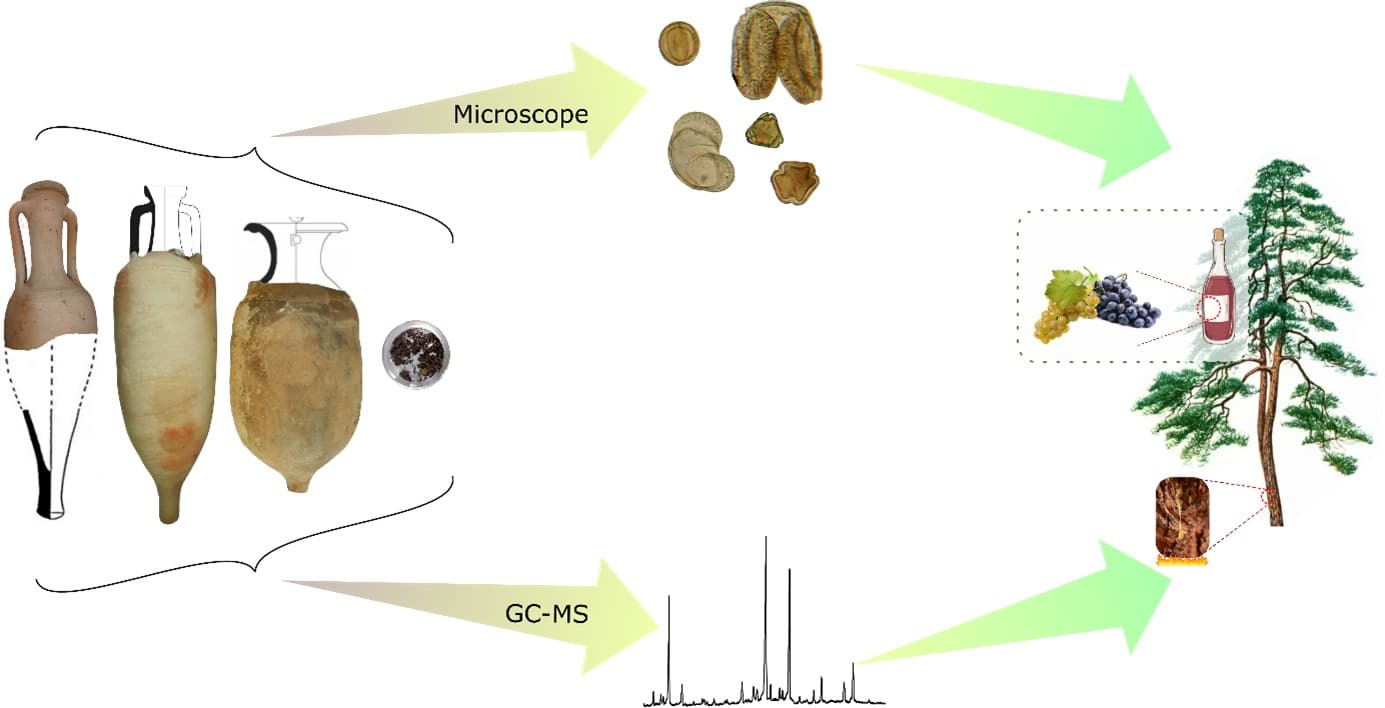(CN) — New research suggests that ancient Romans from the coast of Italy used native grapes in their winemaking while using imported tar to waterproof the jars.
The study was published in the journal PLOS One on Wednesday and details a multifaceted approach used by researchers to study three Roman-era wine jars called amphorae, which had been preserved in a seabed near the modern harbor of San Felice Circeo in Italy.
Louise Chassouant of Avignon University and colleagues studied chemical markers, plant tissue residue and pollen collected from inside the amphorae, which as far as specimens go offered a unique and rare opportunity for the researchers.
Chassouant said that the unique thing about the three amphorae is they had been excavated very recently prior to being sampled, with the excavation happening in October 2018 and the sampling occurring just a year later.
“Moreover, amphorae had been preserved in sea water before the sampling, which prevented them for any degradation process related to drastic medium change occurring after the sampling. An interesting archaeological background was also provided to give insight and highlight the results obtained by the analysis,” Chassouant said in an interview.
The study of the samples showed that the jars were used for the making of both red and white wine, and the grapevine pollen suggests that the winemakers were using local plants in their processes. However, it was unclear to researchers if the the plants used in the winemaking process were domesticated at the time.
The amphorae themselves were also to found to contain imported pine tar that was used to waterproof the jars and maybe to even flavor the wine. The researchers used other historical sources to learn that the pine tar was likely imported from Calabria or Sicily.
In addition to detailing the winemaking process of this area during the Roman period, the research also highlights how using a multidisciplinary methodology can yield greater and more accurate results than when using only one type of research.
“If there was a message to be retained from the reading of this article, it would be related to the multidisciplinary methodology to be applied. Indeed, by using different approaches to unravel the content and nature of the coating layer of Roman amphorae, we have pushed the conclusion further in the understanding of ancient practices than it would have been with a single approach,” the authors said in statement.
When asked, Chassouant further echoed this sentiment by saying that one of the major aims of the paper was to promote the use of multidisciplinary approaches.
“In our case, it pushed forward the conclusions we could draw from chromatographic results by giving details on the possible content recipe as well as the origin from the waterproofing coating. What is important to notice is that without archeobotanical analyses, all these conclusions could not have been drawn,” Chassouant said.
Archaeobotany refers to the study of ancient plant remains and was a key component to the research on the three amphorae, and could apply to further historical research when combined with the other approaches used by the researchers.
“I think fossil analysis could be applied on several materials, starting from materials where resin was used,” Chassouant said.
Chassouant added those using archeobotanical analysis must be very careful with the studied sample to prevent environmental pollen contamination.
Subscribe to Closing Arguments
Sign up for new weekly newsletter Closing Arguments to get the latest about ongoing trials, major litigation and hot cases and rulings in courthouses around the U.S. and the world.









